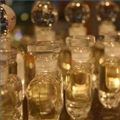The Constituents of Essential Oils
Yes, I’ve been a bit absent lately. But I have a really good reason and perhaps you might even be happy with the fruits of what I’ve been  working on. If you haven’t heard, I’m a big proponent of using essential oils for a myriad of health care and wellness needs. They are the oldest known forms of medicinal aid we have on record and they are still being used regularly by medical professionals in Europe and parts of Asia. My problem though, while researching them for over a decade, was that I kept trying them and they didn’t work for me. Frankly, I had thought that I was just the exception to the rule and still foolishly purchased thousands of dollars of what I thought were the best quality oils at the time in hopes that they would help someone else, someday, when traditional medical care would not be available.
working on. If you haven’t heard, I’m a big proponent of using essential oils for a myriad of health care and wellness needs. They are the oldest known forms of medicinal aid we have on record and they are still being used regularly by medical professionals in Europe and parts of Asia. My problem though, while researching them for over a decade, was that I kept trying them and they didn’t work for me. Frankly, I had thought that I was just the exception to the rule and still foolishly purchased thousands of dollars of what I thought were the best quality oils at the time in hopes that they would help someone else, someday, when traditional medical care would not be available.


